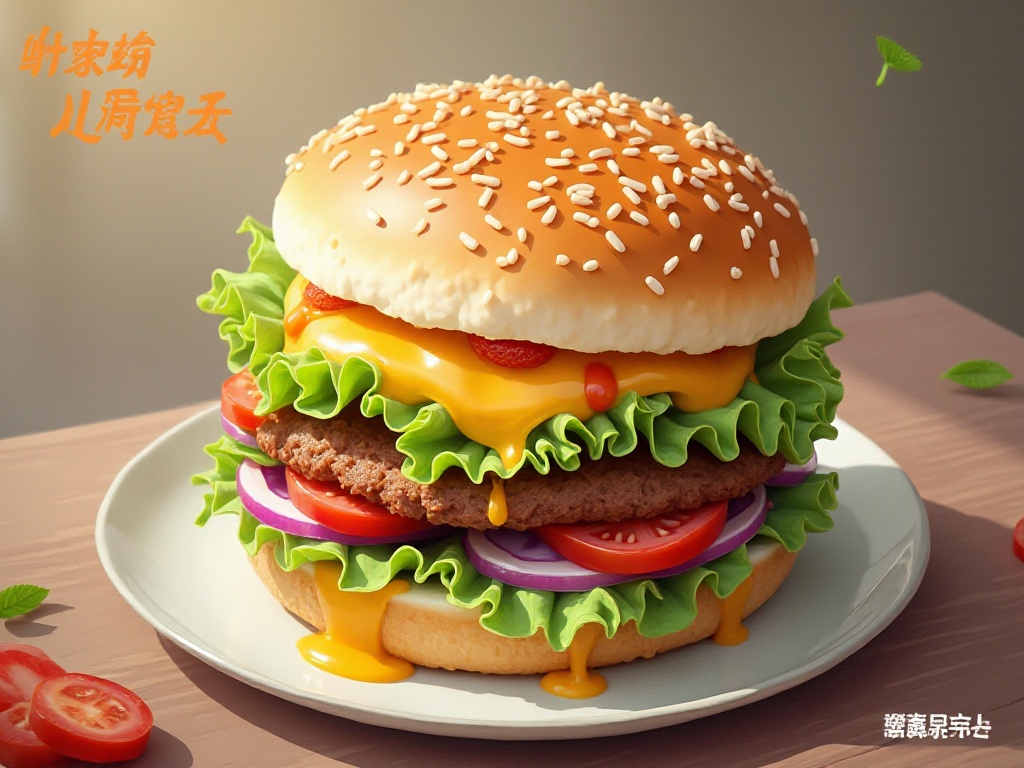Ever wonder what to do with those coffee grounds left after your daily brew? Coffee grounds aren't just waste - they can be a great helper in your garden. Imagine enjoying your morning coffee's rich aroma and energizing effects, while the leftover grounds, often discarded as trash, can actually serve as natural fertilizer, pest control, or exfoliating material. Coffee grounds are rich in nitrogen, phosphorus, potassium, and other essential plant nutrients that can enhance soil fertility when added.
You can dry the coffee grounds and spread them directly in your garden or on potted plant soil to support plant growth. Coffee grounds not only provide nutrients but can also adjust soil pH, making it more suitable for certain plants. For example, you can sprinkle some coffee grounds around indoor plants to promote growth and reduce fertilizing frequency. According to a USDA study, coffee grounds can increase soil nitrogen by 20%, phosphorus by 10%, and potassium by 5%. This means your garden or potted plants will not only grow more vigorously but also help you save on fertilizer costs!
Moreover, coffee grounds have the amazing ability to alter soil pH. Did you know? Some plants, like rhododendrons, orchids, and blueberries, prefer acidic soil, and coffee grounds can help achieve this. Mixing coffee grounds into the soil can create a more suitable environment for these plants to grow. This property of coffee grounds can also improve soil structure, making it looser and better for root growth.

Besides fertilizer, coffee grounds can repel pests. Ants, snails, and even some insects dislike the smell of coffee. You can sprinkle coffee grounds around planters to keep these little bugs away from your plants. The coffee scent acts as a natural barrier for these pests - they'll avoid these areas, protecting your plants from harm.
Additionally, coffee grounds can be used as a natural exfoliant. Want smooth, delicate skin? Mix coffee grounds with a little olive oil and gently massage your skin to remove dead cells and promote blood circulation for smoother skin. This is an economical and eco-friendly beauty tip! The caffeine in coffee grounds can help tighten skin, reduce fine lines and eye bags, while olive oil provides natural moisturizing. This skincare method not only refreshes your skin but lets you experience natural beauty while living an eco-friendly lifestyle.

Kitchens often have various odors, like food smells lingering in the refrigerator or garbage bin odors. Coffee grounds can easily solve these problems. Place coffee grounds near your refrigerator or garbage bin, and they'll absorb those unpleasant smells, keeping your kitchen fresh. The tiny particles in coffee grounds can absorb odor molecules from the air, working even better than regular activated charcoal. You can even place dried coffee grounds in shoe cabinets and closets to maintain freshness in these areas.
I remember once placing coffee grounds in my refrigerator - not only did it eliminate odors, but it also left a subtle coffee fragrance that felt wonderful. Think about it - opening your refrigerator each morning to not only get your ingredients but also catch a whiff of fresh coffee scent - isn't that a pleasant way to live?

Do you have old bicycle inner tubes at home? Don't rush to throw them away - they can become very useful items. Old inner tubes can be transformed into various daily items, such as rubber bands, edge binding materials, or cut into small pieces to make natural bean bags or elastic toys. Cutting inner tubes into small sections to make rubber bands provides quick solutions for securing or binding items when needed. This is not only environmentally friendly but can make your life more convenient.
Imagine when you're doing crafts or repairing furniture and need some elastic rubber bands to secure parts - you can use bicycle inner tube material instead. The rubber material of inner tubes has excellent elasticity and durability, lasting longer than regular rubber bands and not breaking easily. This method is not only eco-friendly but can save you money. You can even cut inner tubes into thin strips to weave into various small items like coasters or keychains, showcasing your craftsmanship.
In gardening, old inner tubes are also very useful. They can be used to support plants, especially those needing support like tomatoes or grape vines. Compared to regular rope, inner tubes have better elasticity and won't damage plants. Cut the inner tubes into thin strips and gently wrap them around plants to provide support without causing harm.
Moreover, inner tubes can be used to secure items. For example, when camping, you can use inner tubes to secure tents or ropes. The elasticity and wear resistance of inner tubes can ensure your tent stays stable in the wind and won't easily loosen. In daily life, you can also use inner tube material to secure furniture, curtain rods, etc., avoiding the use of regular ropes that easily loosen.

Old T-shirts often accumulate in closets - you don't wear them but can't bear to throw them away. Actually, they have many potential uses. Old T-shirts can be repurposed into cleaning cloths, weaving materials, or even eco-friendly shopping bags. Cut T-shirts into strips and hand-weave them into a small rug, which is both environmentally friendly and adds warmth to your home.
Making cleaning cloths is a very simple and practical method. Just cut old T-shirts into appropriately sized squares - these squares can be used to clean furniture and floors, and being pure cotton, they have better absorption than regular cleaning cloths. According to a study, using old clothes to make cleaning cloths and eco-bags can reduce textile waste in landfills by about 5 million tons annually.
Making eco-friendly shopping bags is equally simple. Cut off the bottom hem of the T-shirt, keep the sleeves and neckline, then sew the sides together to create a simple shopping bag. These bags are not only sturdy but can bear weight, perfect for daily shopping use. Using such eco-bags not only reduces plastic bag use but also shows your creativity and support for environmental protection.
After cutting T-shirts into strips, they can be woven into rugs, bath mats, or decorative items. This is not only an eco-friendly choice but also showcases your craftsmanship and creativity. Weaving rugs and bath mats can make your home cozier while reducing dependence on new products. Imagine when guests visit and see your unique woven rug - they'll surely praise your eco-friendly lifestyle.
I remember once weaving a small cushion from old T-shirts and placing it on my living room sofa - friends praised it for being both beautiful and eco-friendly. Such small items not only add warmth to the home but can become conversation starters to help others understand the importance of environmental protection. The weaving process itself is relaxing and enjoyable - you can weave while watching TV or listening to music, enjoying the process.

Many people are now pursuing a zero-waste lifestyle, with a key aspect being reducing plastic and paper use. You can choose package-free or minimally packaged goods, such as bringing your own containers to zero-waste stores for bulk foods. Use reusable glass jars to buy bulk nuts, seeds, grains, etc. This not only reduces plastic waste but also saves packaging costs.
Imagine walking into a zero-waste store with your own glass jars and cloth bags, selecting the food you need, with no plastic packaging and no excess waste. According to environmental organizations, if everyone reduced their plastic bag use by 5 bags annually, it could prevent about 1 billion plastic bags from entering the environment. This shopping method is not only environmentally friendly but lets you experience the joy of living in harmony with nature.
Choosing package-free or minimally packaged goods and reducing plastic and paper use is something we can all do for environmental protection. Think about it - if each of us reduces a little, these small changes will accumulate into huge environmental protection efforts! Reducing plastic bag use not only decreases ocean waste but also protects wildlife from plastic pollution.

Making your own cleaning products can avoid buying heavily packaged products while controlling chemical content in cleaners. You can make basic cleaners using vinegar, baking soda, and lemon juice. For example, mix equal parts white vinegar and water, add a few drops of essential oil for fragrance, and you can clean most household surfaces. Vinegar's acidity effectively kills bacteria, while baking soda removes grease and odors.
Homemade cleaning products are not only eco-friendly but ensure your home is free from excessive chemical residues, protecting you and your family's health. After all, our health depends not only on eating healthy but also on having a clean and safe living environment. Making these cleaning products is very simple - you can adjust recipes according to your preferences and add your favorite fragrances to fill your home with natural scents.
Another benefit of making your own cleaning products is controlling their chemical content. Many commercial cleaners contain harmful chemicals that are not only environmentally unfriendly but potentially harmful to human health. By making your own cleaning products, you can ensure you and your family avoid these harmful ingredients. Using natural vinegar, baking soda, and lemon juice, you can clean your home with peace of mind and enjoy a healthier living environment.
Reducing paper use can be achieved through digital documents, using erasable notebooks, double-sided printing, and other methods. In offices, adopt electronic signature systems to reduce the need for printed documents. For example, electronic signatures can reduce annual paper use by about 30%. Additionally, double-sided printing can cut paper use in half.
Digital documents are not only environmentally friendly but can improve work efficiency. You can access documents anytime, anywhere, without worrying about losing paper documents. Using electronic signature systems, you can process documents quickly without waiting for mail or signing in person. This method not only saves resources but makes your work life more convenient.
You can also use old newspapers or magazines to package items, reducing cardboard box use. For example, use old newspapers instead of boxes to wrap books or other items. According to a study, using old newspapers for packaging can reduce cardboard box use by about 25% annually. Old newspapers can not only be used for wrapping but also for filling gaps to protect items during transport.
This packaging method is not only eco-friendly but adds a unique vintage feel to items. Imagine receiving a gift wrapped in old newspaper - that warm feeling is incomparable to any modern packaging. Plus, the softness of old newspapers can protect items from scratches or compression by hard objects.
Through these tips, we can not only give new life to waste materials but also practice environmental protection in daily life. Though these methods may seem insignificant, small changes add up, and everyone's small efforts can combine into a great force. Would you like to join the eco-friendly lifestyle team starting today? Let's do something for Earth together!
 Previous
Previous
